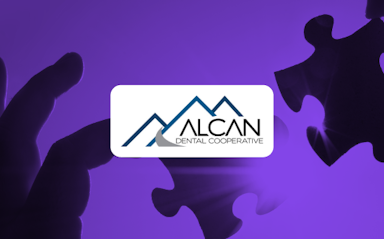Top Key Performance Indicators for Your Dental Practice
The core philosophy behind tracking KPIs at a dental practice is simple and straightforward. You get to improve only what you measure. As you continue to grow, you will begin.
Dental practices cannot afford to leave practice analytics behind. Here are the top 10 dental KPIs to track for your practice’s growth.
The core philosophy behind tracking dental KPIs is simple and straightforward. You get to improve only what you measure.
As you continue to grow, you will appreciate the importance of data and metrics that aid you in monitoring, tracking, and improving your practice performance.
“Data insights help narrow down and prioritize the areas that require immediate attention.”
This includes the decision on increasing or decreasing treatment fees, tracking and reducing canceled appointments and no-shows, monitoring the effectiveness of treatment plan presentations and calculating the revenue generated from each treatment category. Moreover, KPIs can help you improve the efficiency of collections and clinical operations, reduce overheads and monitor patient growth.
Let’s look at some of the vital key performance indicators for dental offices across production, collections, and costs.
Practice Production
The most critical dental KPI to track as it directly impacts your practice’s health. Keeping track of the practices’ production on a daily, weekly, and monthly basis will unveil a better picture of how well your practice is performing. Dividing the monthly practice production goal into weekly and daily targets and integrating strategies to achieve the right-level production is crucial.

A benchmark production and a system in place to ensure that the production and collection go hand in hand are crucial for seamless dental practice operation. Communicate to your staff about your goals, probably during your morning huddles, and motivate them to put in their best to achieve them.
Number of New Patients
The number of new patients is a crucial metric to be tracked. With that said, this KPI is more than just the sum of total patient visits. Tracking new patient intake helps you calculate a target for each specialty your practice offers.
According to the Levin Group Data Center, a model could be engaged in which 75% of practice production comes from the dentist and 25% from the hygiene department. Further, the dentist's 75% can be divided as 50% of production coming from hygiene patients, 40% from new patients, and 10% from emergencies. Once the yearly target is locked, practices can split it and identify their new patient target.
Monitoring the new patient KPIs can also determine the revenue from specialty services such as oral and maxillofacial surgery, orthodontics, and endodontics.
Most specialty services bring in new patients, representing over 90% of new patient revenue.
However, these figures also depend on the niche services offered at your practice. Breaking down your annual production goal is another approach that will help you calculate the target KPIs for new patients.
Patient Attrition
The other end of the KPI spectrum measures patient attrition. Every practice wants to reduce its attrition rates and drive the percentage share for new patients. While there is no way to avoid attrition altogether, monitoring this KPI provides insights into the strategies you currently have in place at your practice. Some of the metrics you can track to keep patient attrition in check include:

Hygiene Pre-appointment Rate
Dental hygiene pre-appointments are future appointments that patients schedule for their regular dental cleanings and check-ups. By tracking them, practices can ensure that their patients are returning, which in turn will improve patient retention and practice revenue. The hygienist or hygiene assistant arranges the patient's follow-up appointment before they depart from the hygiene room. It is crucial to achieving a high rate of approximately 95% of hygiene patients leaving with their next appointment already booked, as this is a significant factor for success.
Schedule Utilization Rates
Schedule utilization rates show you how effectively schedules are managed and help you determine the average production per patient. Efficient scheduling ensures that your appointment book achieves the monthly production goals for operative and hygiene schedules. Tracking these helps you prioritize daily schedules based on appointments that add the most value or generate the most revenue.
Schedule utilization, along with the average production per patient, demonstrates the financial worth of a patient to your practice. Potentially, you can maximize the opportunities from each patient visit by increasing the number of whitening cases, adding a periodontal diagnostic program, or implementing a new service such as sleep apnea treatment.
Reappointments or Recare
On average, one-third of all practice revenue comes from reappointments or re-care. Hence, measuring this KPI becomes crucial. This helps you compare the percentage of patient acquisition vs. retention for your practice. There are instances when a practice experiences limited growth despite a steady inflow of new patients. Such a situation is commonly referred to as a “leaky boat.”
At 20%, dentists experience the highest churn rates in the medical profession.
These figures can be attributed to competitive pricing, a saturated market or a relatively high concentration of dentists, and a lack of service distinction. These KPIs, other than showing you the current status, help you justify the initiatives or control measures that help you improve practice performance.
Broken Appointments
Broken appointments are the rates of patient no-shows and cancellations. Practices that don’t have a good grasp on cancellations and no-shows or that don’t have a system to minimize broken appointments often struggle with profitability.
Subsequently, this KPI lets you measure the effectiveness of implemented actions to reduce patient no-shows and cancellations. This includes monitoring how quickly your schedules are filled up, the pace of follow-ups and appointment reminders, and the effectiveness of including payment options while setting up appointments.
Case Acceptance Rates
Case acceptance rates, while being a vital KPI to measure production, also help you determine the effectiveness of your plan presentations. Case acceptance rates are considered the most variable KPIs in dental practices. It is important to set targets for case acceptance that reflects the type and complexity of treatments. For instance, a 90% target for single-tooth procedures is acceptable, while this figure could be lower for more complex treatment procedures.
Compute Collections

Collection rates are a powerful KPI and can ultimately make or break the cash flow and income at a practice. An average practice forfeits around 9% of its yearly production to uncollected insurance revenue. This accounts for the average annual revenue lost to uncollected insurance benefits to around $135000. The dimensions within this KPI include over-the-counter collections (OTCs), AR status, aging, and outstanding claim status.
Overheads
Overheads can be widely classified into fixed and variable overheads. These include everything from infrastructure overheads, equipment, tools, labor costs, and dental supplies. It is recommended to consider the staff labor percentage as an independent KPI because labor is the single largest expense in practice. This covers the defined percentages for general practice, orthodontics, pediatric dentistry, oral and maxillofacial surgery, and other clinical and non-clinical staff overheads.
In conclusion, a monthly measure, monitor, and track for vital KPIs help refine the performance of your practice. Not only does it help you stay abreast of the performance narrative, but it also lays the foundations to set effective goals and targets. Moreover, this is the best approach to measure your return on efforts and make informed decisions. CareStack presents you with vital KPIs and associated data metrics, thus providing you with a single source of truth when it comes to tracking practice performance. Having a set of relevant pre-defined KPIs in hand, analyzing the practice’s performance will be a lot easier.




